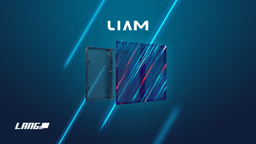5G Processing – Meeting The Ever-Growing Demands Of Modern LED Systems

Just a few weeks ago, the time had come: With AURA, LANG introduced its latest LED product to complement the rental portfolio. MiniLED in Package technology (MIP), a fine 1.5 mm pixel pitch, 1,500 nits of brightness, and flexible cabinets for creative curving make AURA a cabinet with huge potential in rental applications.
Thanks to MIP, AURA delivers razor-sharp images. But the more pixels you introduce, the more complex the signal distribution becomes. One term that keeps popping up as an answer to this challenge is 5G processing.
AURA relies on 5G processing using the latest XA50 Pro receiving card from NovaStar. And no, it has nothing to do with mobile networks. So what does 5G mean in the LED context – and why is modern LED hardware increasingly built around it?
What is 5G all about?
In this context, 5G refers to a new generation of receiving cards capable of handling significantly higher data bandwidth than their predecessors. Where traditional systems used so-called 1G cards, newer 5G-capable receivers now transmit far more data per cable.
This leap is made possible by modern controller architectures like the CX40, MX2000 Pro, or MX6000 Pro, which feature 5G outputs and can transmit high-resolution content over dramatically fewer signal paths – in many cases, a single cable is enough to drive a Full HD display surface.
High-resolution LED walls – especially those with small pixel pitches like AURA – require a huge volume of data. A conventional 1G card quickly reaches its limits: a Full HD wall may need three or more input lines. More cables mean more weight, more setup time, and more potential failure points. This is exactly where 5G comes into play.
It can handle more data – and enhance your images
But this new generation of processing isn’t just about throughput. The XA50 Pro supports a wide range of advanced image enhancement features, including HDR10 and HLG, Adaptive Thermal Compensation, precise multi-layer full-grayscale calibration, and 22bit+ processing, which ensures ultra-fine detail even at low brightness. In applications like trade shows, studios, or live production – where image quality is more than a spec, it’s a statement – these technologies are indispensable.
5G Processing is therefore more than just a trend – it’s a logical and necessary step forward for modern LED systems. In products like AURA, this advancement becomes not only visible, but fully tangible. Anyone investing in LED today should look beyond brilliant pixels – and pay close attention to the intelligence driving them.






Please sign in or register for FREE
If you are a registered user on AVIXA Xchange, please sign in